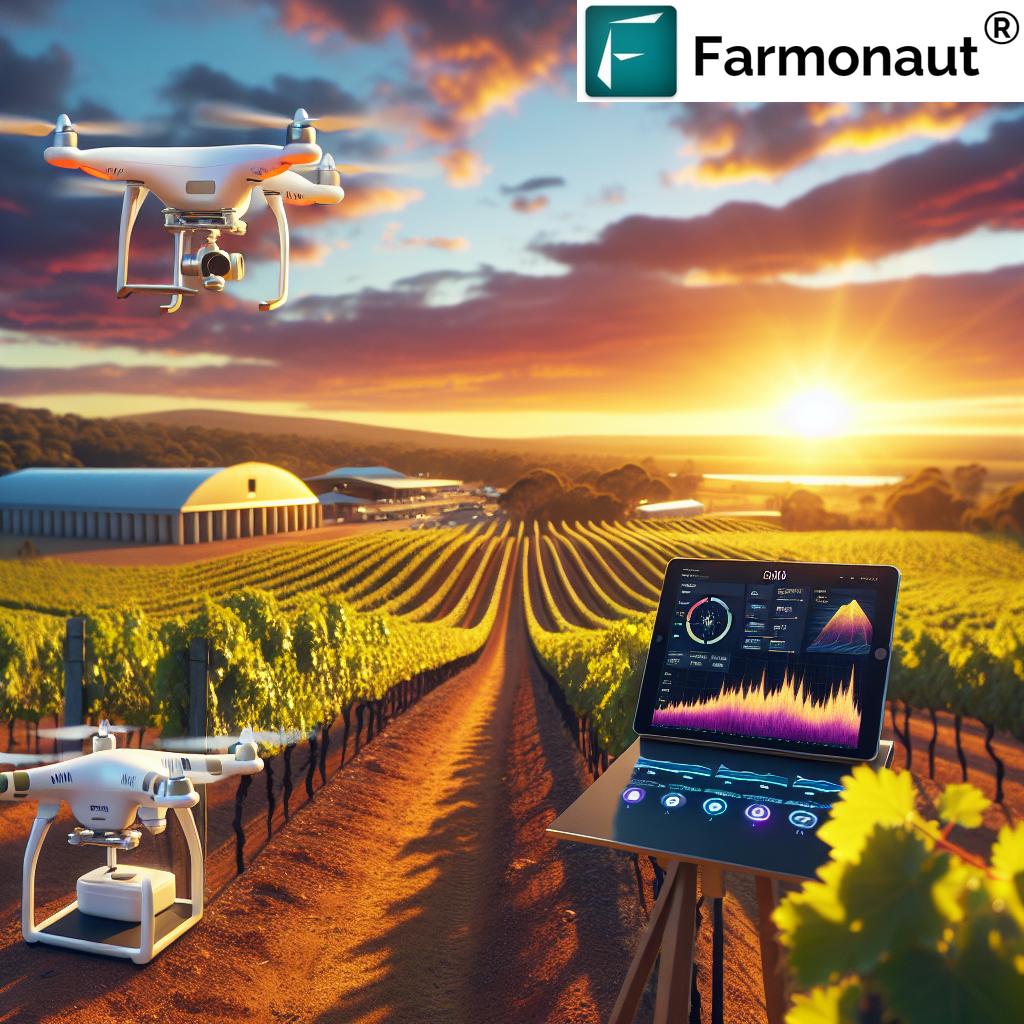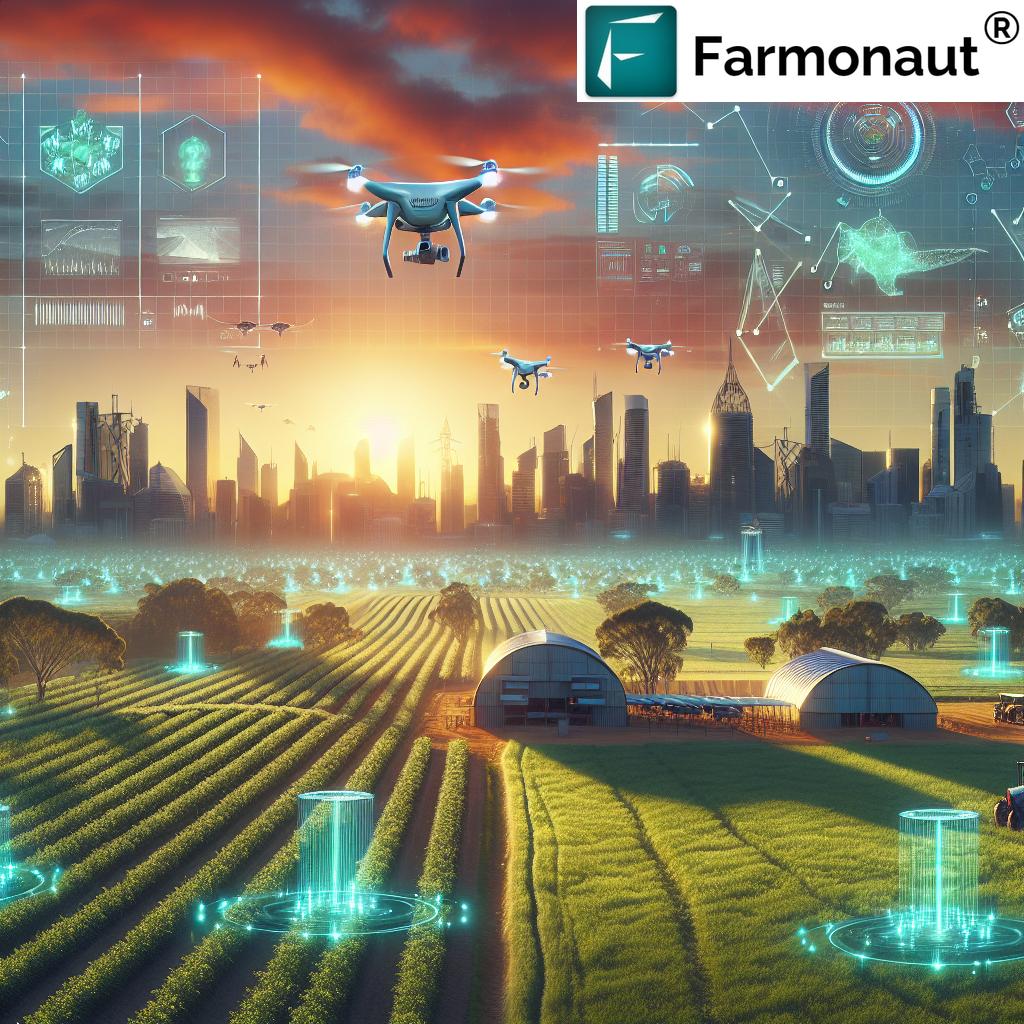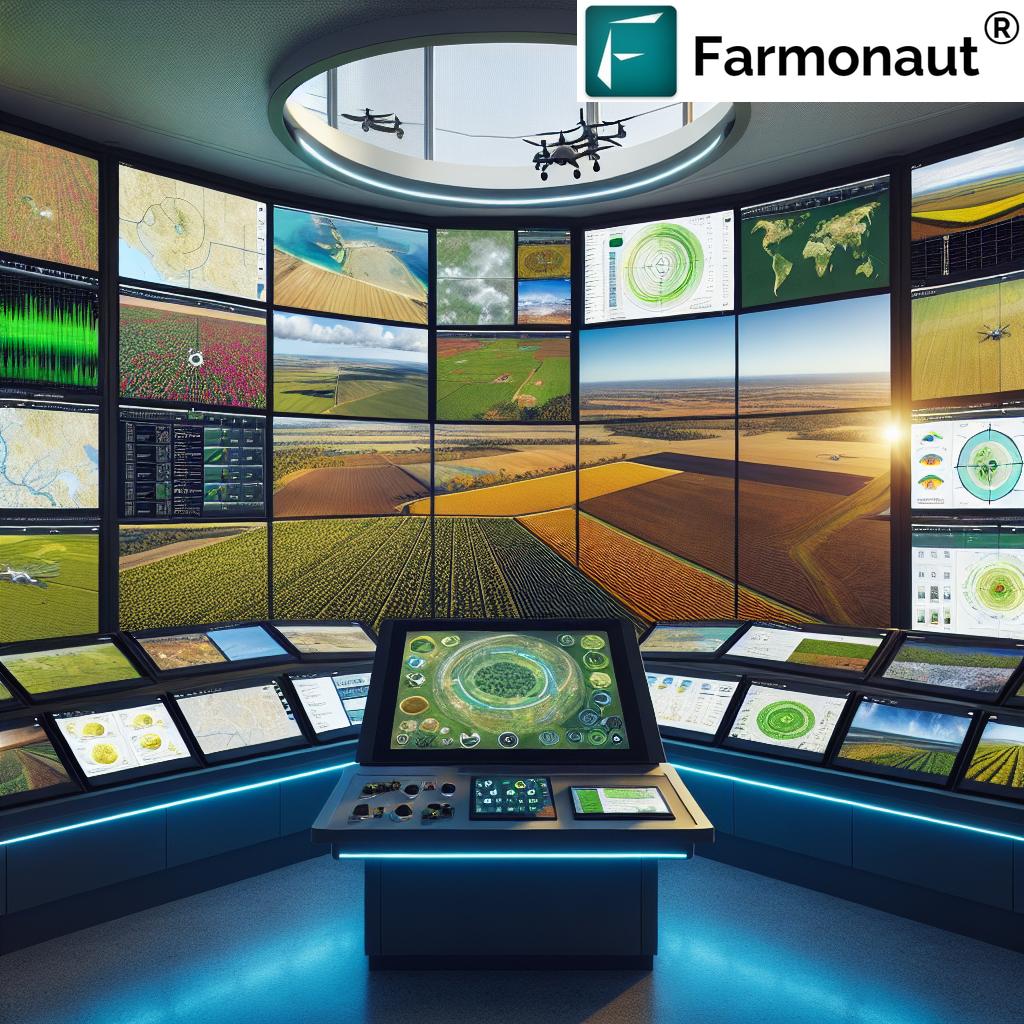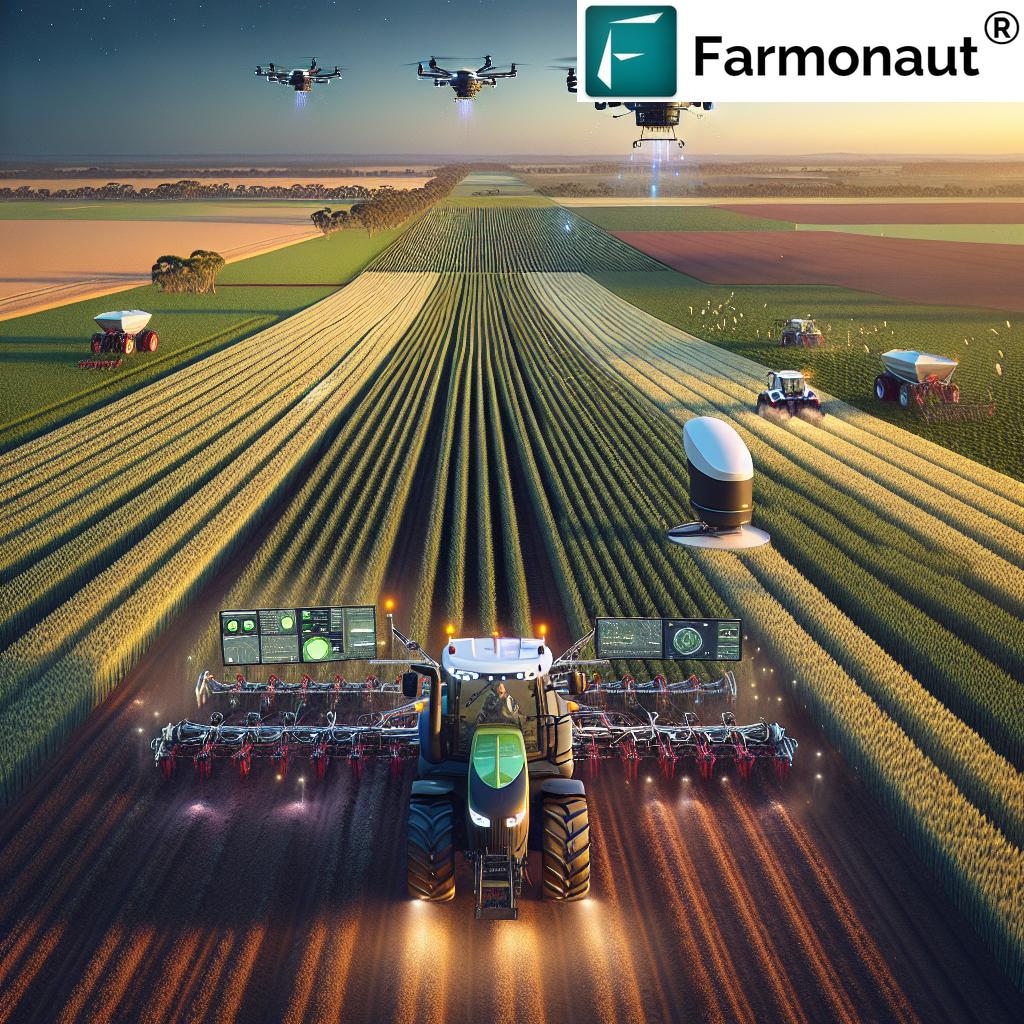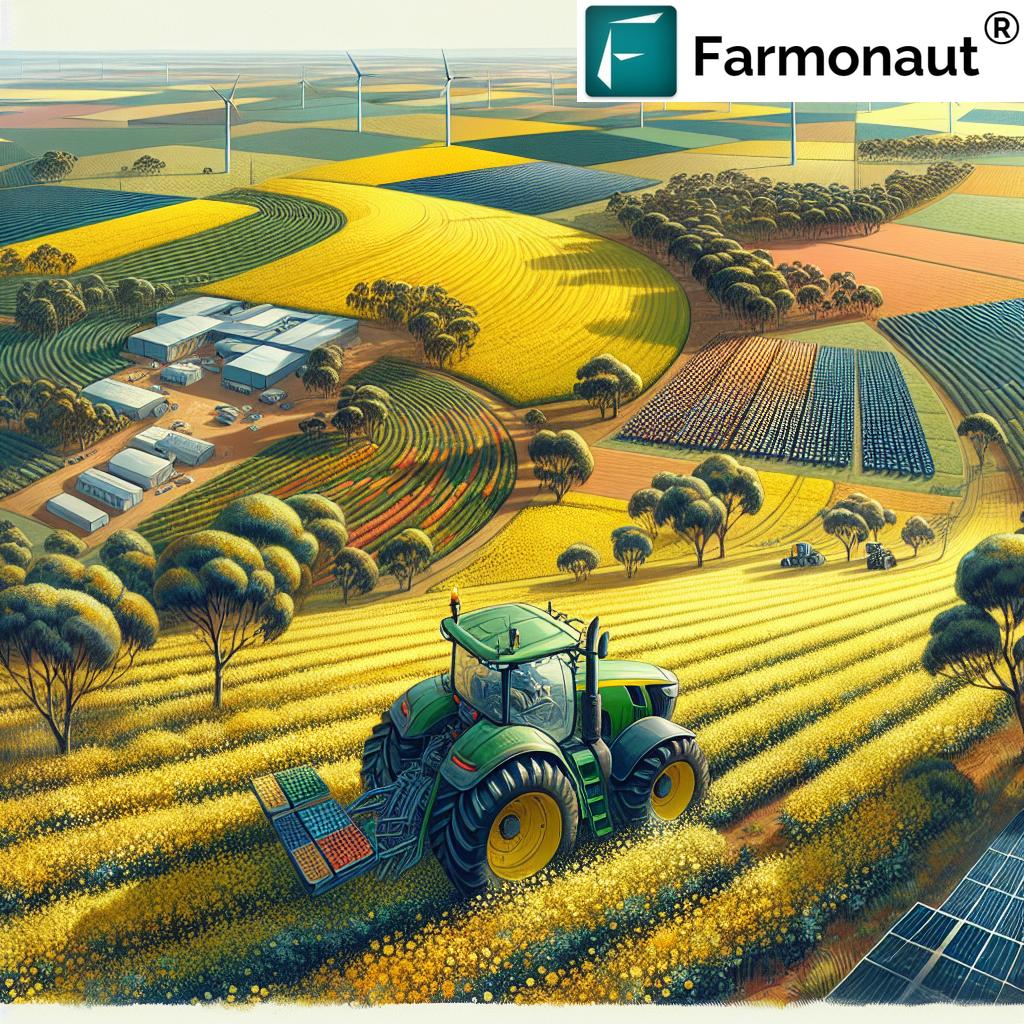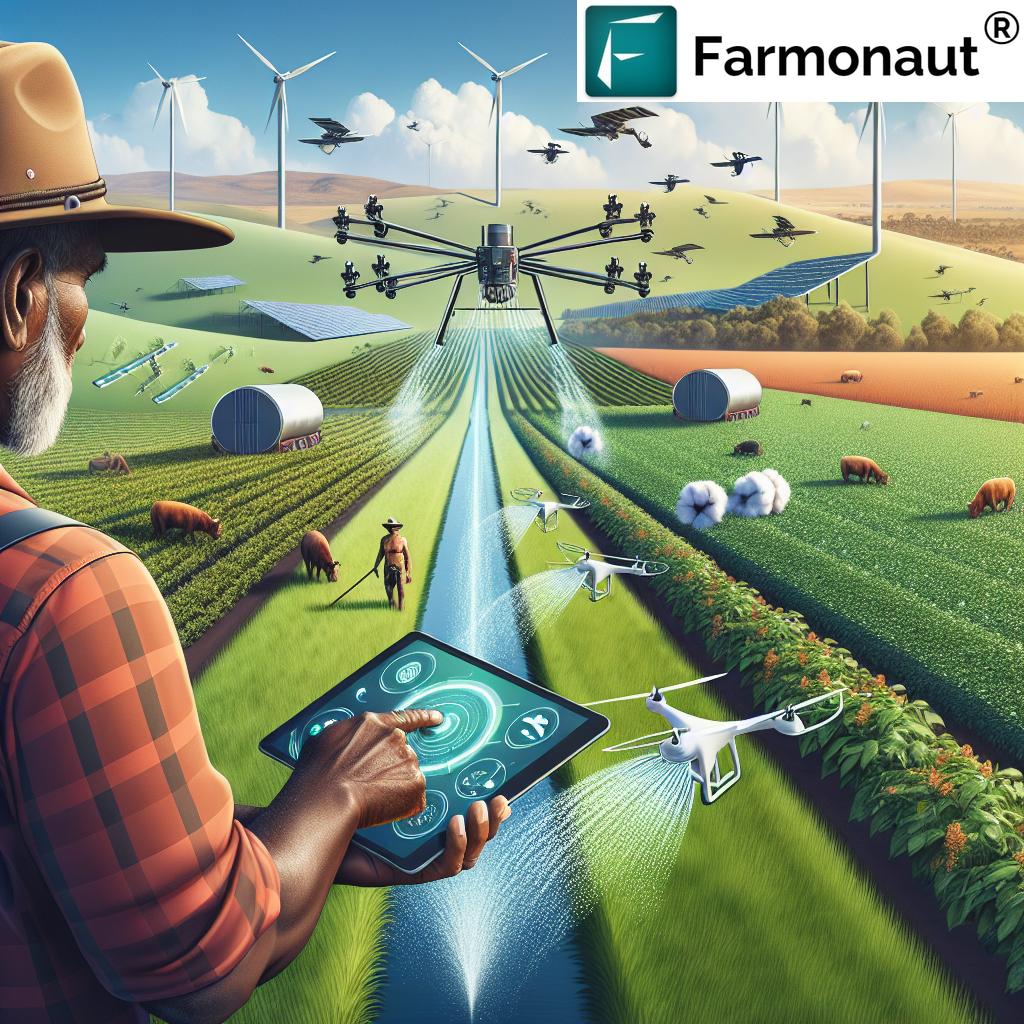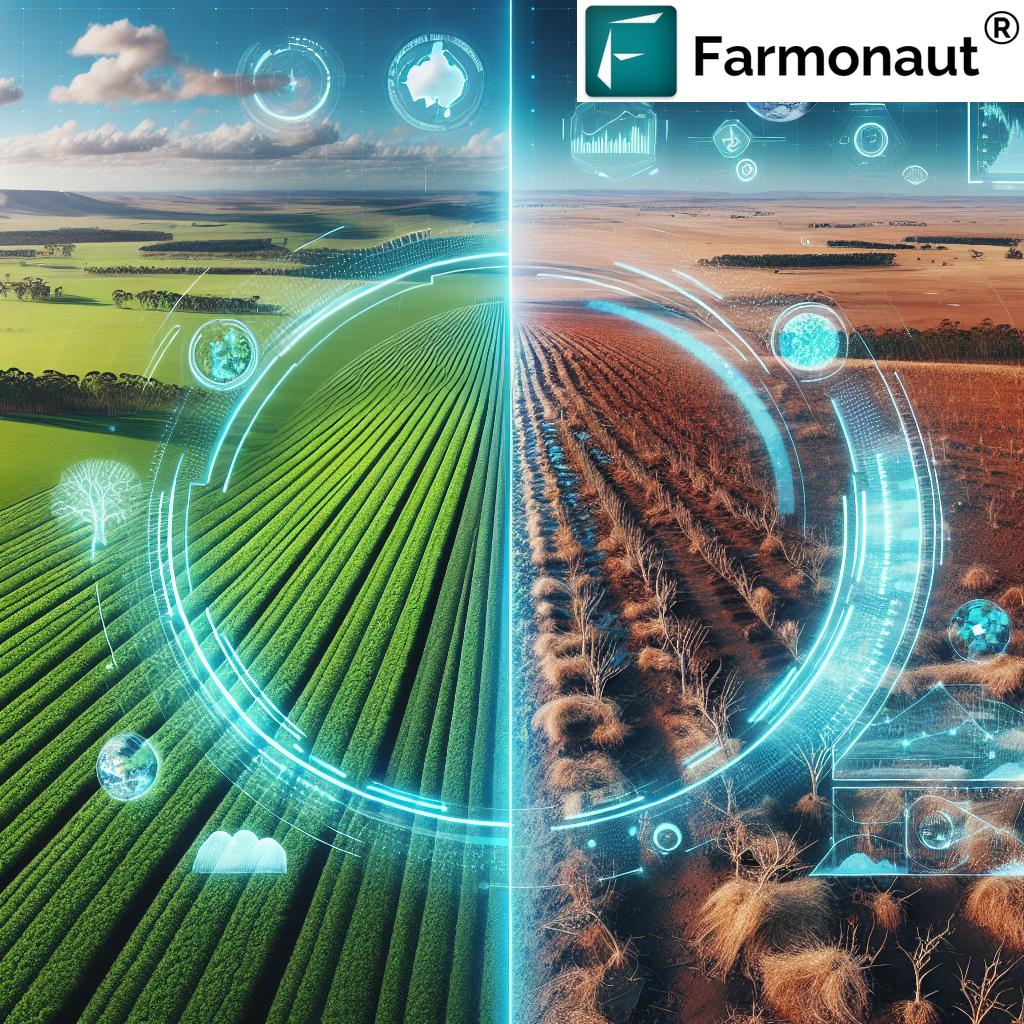Revolutionizing Australian Apiculture: Smart Beehive Monitoring with 4G-Connected Scales for Precision Hive Management
“4G-connected hive scales in Australia can remotely monitor beehive productivity, revolutionizing apiculture management for thousands of beekeepers.”
In the vast landscapes of Australia, a quiet revolution is buzzing through the honey industry. We’re witnessing the dawn of a new era in apiculture, where smart beehive monitoring and cutting-edge agritech innovations are transforming the way apiarists manage their hives. At the heart of this transformation lies a groundbreaking project: the development of a 4G-connected hive scale for precision apiculture. This innovative honey production technology is set to address the myriad challenges faced by Australian beekeepers, offering remote beehive management solutions through a user-friendly mobile application.
As we delve into this exciting development, we’ll explore how this project exemplifies the intersection of industrial design, technology, and apiary management. We’ll uncover the potential impact on the rural agricultural workforce and the broader Australian honey market. Join us as we journey through the research and development process, from prototyping to user interface design, and understand how this technology could reshape traditional beekeeping practices.
The Buzz About Smart Beehive Monitoring
Smart beehive monitoring represents a significant leap forward in apiary management technology. By integrating sensors, connectivity, and data analytics, these systems provide beekeepers with unprecedented insights into their hives’ health and productivity. Let’s break down the key components of this revolutionary approach:
- 4G-Connected Hive Scales: The cornerstone of smart monitoring, these scales offer real-time weight data, crucial for tracking honey production and hive health.
- Environmental Sensors: Monitoring temperature, humidity, and other environmental factors to ensure optimal conditions for bee colonies.
- Data Analytics: Advanced algorithms process the collected data, providing actionable insights to apiarists.
- Mobile Applications: User-friendly interfaces allow beekeepers to access hive information remotely, anytime and anywhere.
This innovative honey production technology is not just about convenience; it’s about transforming the entire apiculture industry. By leveraging agricultural IoT solutions, beekeepers can optimize hive productivity, reduce labor costs, and make data-driven decisions that benefit both their bees and their businesses.
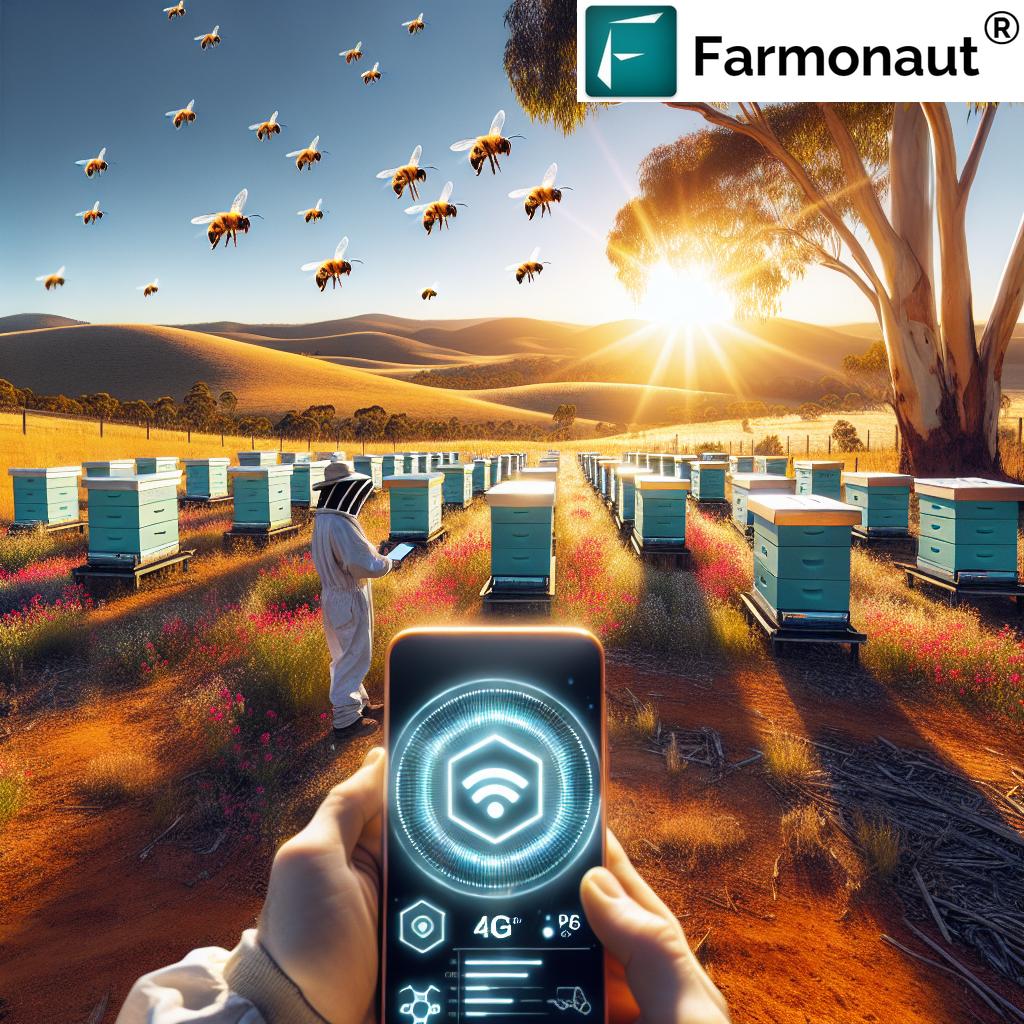
The Australian Honey Industry: A Sweet Opportunity for Innovation
Australia’s honey industry is a significant contributor to the country’s agricultural sector, with a market value exceeding $100 million annually. However, traditional beekeeping methods have long been labor-intensive and time-consuming, presenting challenges for apiarists striving to meet growing demand while maintaining quality standards. The introduction of smart beehive monitoring systems addresses these challenges head-on, offering a range of benefits:
- Increased Efficiency: Remote monitoring reduces the need for frequent physical inspections, saving time and resources.
- Improved Hive Health: Early detection of issues allows for prompt intervention, leading to healthier bee colonies.
- Enhanced Productivity: Data-driven insights help optimize honey production and pollination services.
- Sustainable Practices: Precision management leads to more sustainable beekeeping methods, benefiting both bees and the environment.
As we explore this innovative project, it’s crucial to understand how it fits into the broader context of Australia’s agricultural innovation landscape. The development of smart beehive monitoring systems aligns perfectly with the country’s focus on agritech advancements and sustainable farming practices.
The 4G-Connected Hive Scale: A Closer Look
At the core of this revolutionary project is the 4G-connected hive scale. This ingenious device is designed to provide real-time, accurate weight measurements of beehives, offering invaluable data to apiarists. Here’s how it works:
- Continuous Monitoring: The scale constantly measures the hive’s weight, detecting even minor changes throughout the day.
- 4G Connectivity: Data is transmitted via 4G networks, ensuring reliable communication even in remote areas.
- Cloud-Based Data Storage: Information is securely stored and processed in the cloud, accessible to beekeepers anytime.
- Integration with Other Sensors: The scale works in tandem with other environmental sensors for comprehensive hive monitoring.
This innovative honey production technology offers unprecedented insights into hive activity, honey production rates, and colony health. By tracking weight fluctuations, beekeepers can:
- Determine the optimal time for honey harvesting
- Monitor food consumption rates, especially during winter months
- Detect potential issues such as swarming or robbing
- Assess the success of different hive locations and foraging areas
The 4G-connected hive scale is more than just a weighing device; it’s a window into the intricate world of bee colonies, providing data that was previously impossible to obtain without disturbing the hives.
From Concept to Reality: The Development Process
The journey from concept to a fully functional 4G-connected hive scale involves a complex process of research, design, and testing. Let’s explore the key stages of this innovative project:
- Needs Assessment: Engaging with Australian apiarists to understand their specific challenges and requirements.
- Prototype Development: Creating initial designs and functional prototypes of the hive scale.
- Sensor Integration: Incorporating various environmental sensors to complement weight data.
- 4G Connectivity Solutions: Developing robust communication protocols for reliable data transmission.
- Software Development: Creating user-friendly mobile and web applications for data visualization and analysis.
- Field Testing: Conducting extensive trials in various Australian climates and beekeeping conditions.
- Refinement and Optimization: Iterating on the design based on user feedback and performance data.
This rigorous development process ensures that the final product not only meets the technical specifications but also addresses the real-world needs of Australian beekeepers. The project exemplifies the power of collaboration between industrial designers, software engineers, and apiculture experts.
The User Interface: Putting Control in Beekeepers’ Hands
A critical component of this smart beehive monitoring system is the user interface. The project team has developed a comprehensive mobile application that serves as the control center for apiarists. Key features of this app include:
- Real-Time Dashboard: Displaying current hive weights, environmental conditions, and alerts.
- Historical Data Analysis: Trends and patterns over time to inform long-term decisions.
- Customizable Alerts: Notifications for significant weight changes, temperature fluctuations, or other user-defined parameters.
- Hive Management Tools: Record keeping for treatments, queen replacements, and other apiary tasks.
- Integration with Weather Data: Local forecasts to help plan beekeeping activities.
This user-friendly interface empowers beekeepers to make informed decisions based on data, rather than relying solely on intuition and experience. It’s a perfect example of how agritech can enhance traditional practices without replacing the invaluable knowledge of experienced apiarists.
“Smart beehive technology could potentially impact Australia’s $101 million honey industry by optimizing production and reducing labor costs.”
Impact on the Australian Honey Industry
The introduction of smart beehive monitoring systems has the potential to revolutionize the Australian honey industry in several ways:
- Increased Productivity: More efficient hive management leads to higher honey yields and better pollination services.
- Quality Improvement: Precise monitoring ensures optimal harvesting times, resulting in higher-quality honey.
- Cost Reduction: Fewer manual inspections and more targeted interventions reduce operational costs.
- Scalability: Beekeepers can manage larger operations with the same or fewer resources.
- Environmental Benefits: Data-driven practices promote bee health and support sustainable beekeeping.
Moreover, this technology opens up new opportunities for research and collaboration within the industry. By aggregating anonymized data from multiple apiaries, researchers can gain valuable insights into bee behavior, the impact of climate change on honey production, and the effectiveness of different management strategies.
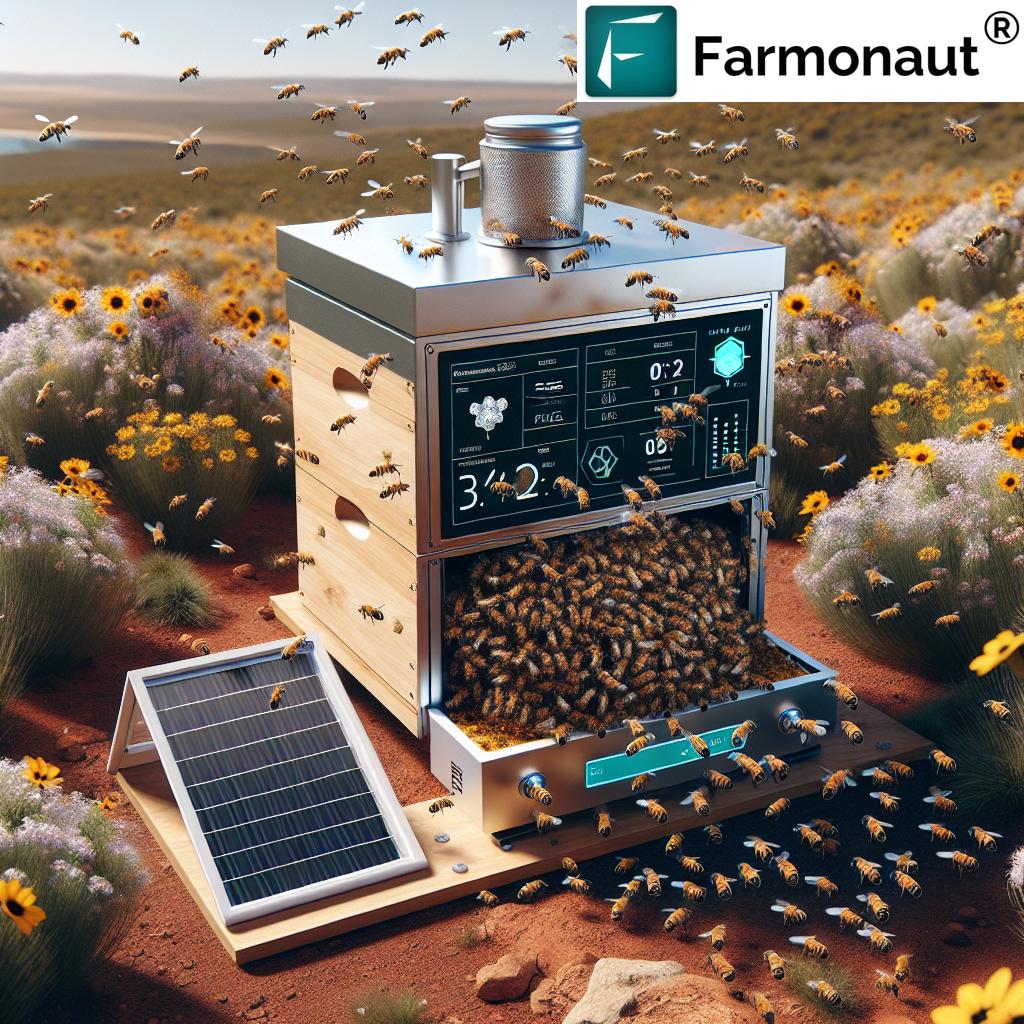
Challenges and Considerations
While the benefits of smart beehive monitoring are clear, there are several challenges and considerations that need to be addressed:
- Initial Investment: The cost of implementing this technology may be a barrier for some smaller beekeeping operations.
- Connectivity Issues: Ensuring reliable 4G coverage in remote areas where many apiaries are located.
- Data Privacy and Security: Protecting sensitive information about hive locations and production data.
- Integration with Existing Practices: Helping traditional beekeepers adapt to and embrace new technologies.
- Maintenance and Durability: Ensuring the longevity of electronic equipment in harsh outdoor conditions.
Addressing these challenges is crucial for the widespread adoption and success of smart beehive monitoring systems in Australia. The project team is actively working on solutions, including exploring partnerships with telecommunications providers to improve rural connectivity and developing robust, weather-resistant hardware designs.
The Future of Beekeeping: A Data-Driven Approach
As we look to the future, it’s clear that data-driven approaches will play an increasingly important role in beekeeping. The 4G-connected hive scale project is just the beginning of a larger transformation in the industry. Some potential future developments include:
- AI-Powered Predictive Analytics: Using machine learning to forecast honey yields and identify potential health issues before they become serious.
- Drone Integration: Combining aerial surveys with ground-based data for comprehensive apiary management.
- Blockchain for Honey Traceability: Implementing blockchain technology to ensure the authenticity and origin of honey products.
- Virtual Reality Training: Developing immersive training programs for new beekeepers using data from real hives.
- Automated Hive Management Systems: Creating smart hives that can automatically adjust conditions based on sensor data.
These advancements have the potential to not only improve honey production but also contribute to the broader goals of sustainable agriculture and food security in Australia and beyond.
Comparison: Traditional vs. Smart Beehive Monitoring
| Monitoring Aspect | Traditional Method | Smart Beehive Monitoring |
|---|---|---|
| Hive Weight Tracking | Manual lifting or estimation | Continuous, precise measurement |
| Data Collection Frequency | Weekly or monthly | Real-time, 24/7 |
| Remote Accessibility | Not available | Accessible from anywhere via mobile app |
| Labor Requirements | High (several hours per week) | Low (minimal physical inspections) |
| Cost Efficiency | Variable, labor-intensive | Initial investment, long-term savings |
The Role of Farmonaut in Precision Agriculture
While Farmonaut is not directly involved in the development of smart beehive monitoring systems, its innovative approach to precision agriculture aligns closely with the goals of this project. Farmonaut’s satellite-based farm management solutions offer valuable insights that can complement beekeeping operations:
- Vegetation Health Monitoring: NDVI data can help identify optimal locations for apiaries based on floral resources.
- Weather Forecasting: Accurate weather predictions assist beekeepers in planning their activities and protecting hives from extreme conditions.
- Crop Management: For beekeepers who also grow crops, Farmonaut’s tools can help optimize both aspects of their agricultural operations.
Beekeepers interested in leveraging satellite technology for their operations can explore Farmonaut’s offerings:
API Access | API Developer Docs
Embracing Innovation in Australian Apiculture
The development of 4G-connected hive scales and smart beehive monitoring systems represents a significant step forward for the Australian honey industry. By embracing these innovations, apiarists can:
- Improve the efficiency and productivity of their operations
- Enhance the health and well-being of their bee colonies
- Contribute to the sustainability of the apiculture sector
- Participate in the broader digital transformation of agriculture
As this technology continues to evolve, it will undoubtedly play a crucial role in shaping the future of beekeeping in Australia and beyond. The integration of smart monitoring systems with other agricultural technologies, such as those offered by Farmonaut, will create a more connected and data-driven approach to food production.
Conclusion: A Sweet Future for Australian Apiculture
The introduction of smart beehive monitoring with 4G-connected scales marks a turning point for Australian apiculture. This innovative honey production technology not only addresses the challenges faced by apiarists but also opens up new possibilities for growth and sustainability in the industry. As we’ve explored throughout this article, the benefits of this technology are far-reaching:
- Enhanced hive management through real-time data and remote monitoring
- Improved bee health and colony productivity
- Reduced labor costs and increased operational efficiency
- Opportunities for data-driven research and industry-wide improvements
- Potential for integration with other agricultural technologies
While challenges remain, particularly in terms of initial investment and rural connectivity, the potential rewards far outweigh the obstacles. As more Australian beekeepers adopt these smart monitoring systems, we can expect to see a ripple effect throughout the industry, leading to higher quality honey products, more sustainable beekeeping practices, and a stronger, more resilient apiculture sector.
The future of beekeeping in Australia is bright, and it’s buzzing with the sound of innovation. By embracing these new technologies and combining them with traditional knowledge and expertise, Australian apiarists are well-positioned to lead the global honey industry into a new era of precision, productivity, and sustainability.
Frequently Asked Questions (FAQ)
Q: How does a 4G-connected hive scale work?
A: A 4G-connected hive scale continuously measures the weight of a beehive and transmits this data via 4G networks to a cloud-based system. Beekeepers can access this information through a mobile app, allowing them to monitor hive activity and honey production remotely.
Q: What are the main benefits of smart beehive monitoring for apiarists?
A: The main benefits include real-time hive health monitoring, improved productivity through data-driven decision-making, reduced labor costs, early detection of issues like swarming or disease, and the ability to manage larger apiaries more efficiently.
Q: Is this technology suitable for small-scale beekeepers?
A: While the initial investment may be a consideration for small-scale operations, the long-term benefits in terms of improved hive management and productivity can make it a worthwhile investment for beekeepers of all sizes.
Q: How does smart beehive monitoring contribute to sustainable beekeeping?
A: By providing precise data on hive conditions and bee activity, smart monitoring systems allow for more targeted interventions and optimized resource use. This leads to healthier bee colonies and more sustainable beekeeping practices overall.
Q: Can this technology help with the early detection of bee diseases?
A: Yes, by monitoring factors such as hive weight, temperature, and bee activity patterns, smart monitoring systems can help detect anomalies that may indicate the presence of diseases or other issues, allowing for early intervention.





